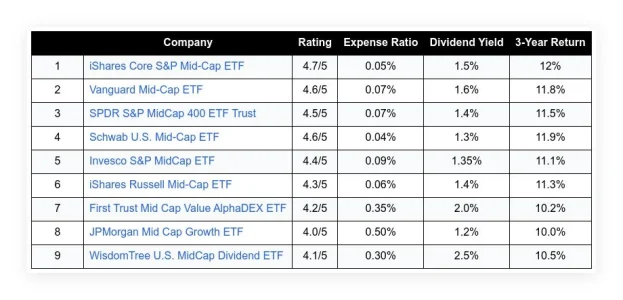Social Security is a phrase often used in retirement planning and has been discussed in the media recently. For many, though, it remains a mystery. It provides income, but how does it really work? Further, it’s easy to become overwhelmed by countless claims, strategies, and confusing terminology.
This post, however, will help you navigate Social Security’s complexities, maximize your benefits, and secure a more comfortable retirement.
Table of Contents
ToggleWhat Exactly Is Social Security?
Imagine a safety net made up of generations of hardworking Americans. That’s what Social Security is all about. The program was established in 1935 during the Great Depression to provide a steady income to retirees, people with disabilities, and surviving family members.
While working, you and your employer contribute 6.2% of your wage through the Federal Insurance Contributions Act (FICA). In turn, the Social Security Trust Fund benefits current beneficiaries. In a sense, today’s workers are supporting yesterday’s retirees.
Decoding the Benefit Calculation
Social Security checks don’t appear out of nowhere. The amount is calculated based on your lifetime earnings. As a simplified breakdown, here is what you need to know;
Your earnings history determines Social Security retirement benefits. To calculate your benefit, the Social Security Administration (SSA) uses the following formula;
- Your highest 35 years of earnings (adjusted for inflation)
- Your age at the time you begin claiming
- Your full retirement age (FRA)
For your information, based on the 2024 edition of the Social Security Statistical Supplement, the monthly payment for a retired 67-year-old worker is $1,884, or $22,600 a year.
Full retirement age (FRA).
A person’s FRA is the age at which they can receive 100% of their Social Security benefit. Depending on your birth year, it may be;
- The FRA for those born between 1943 and 1954 is 66.
- Those born between 1955 and 1959 will see an increase in FRA.
- If you were born in 1960 or later, your FRA is 67.
You can start claiming at age 62 but must pay a 30% reduction. Alternatively, you can delay benefits past your FRA and increase your monthly payment up to 70 years of age.
The Million-Dollar Question: When Should You Claim?
Here is where “strategy” comes in. There is no one-size-fits-all solution. In each case, it varies;
- Claiming early (Age 62–FRA).
- Pros. You get to access your income sooner. This is a great option if you need the money or want to retire early.
- Cons. It is possible to have your benefits permanently reduced by up to 30%. In addition, your spouse will receive lower survivor benefits as a result.
- Claiming at FRA.
- Pros. The benefit you receive is full and unreduced. This is a good middle ground for many people.
- Cons. If you delay, you lose out on the extra boost.
- Delaying Until 70.
- Pros. Your benefit increases by 8% every year you delay past FRA up to age 70. Over your lifetime, this can amount to a substantial sum.
- Cons. It takes longer for your income to arrive. As such, you might not “break-even” if you don’t live a long life.
Making sense of the break-even point.
In Social Security discussions, the term “break-even” is often used. It means the benefits you receive from delaying exceed those you would have received from claiming earlier. If you expect to live well into your 80s or beyond, delaying benefits can be beneficial financially.
Strategies to Maximize Your Benefits
Time isn’t everything; it’s all about playing the long game.
Work at least 35 years.
With fewer than 35 years of income under your belt, zero-income years are included in your benefit calculation, reducing it. Replacing low-earning years from your early career with part-time work later in life may even be possible.
Boost your earnings.
You’ll receive more benefits if you earn more (especially during years of higher wages). An individual’s lifetime earnings are affected by income from raises, promotions, side gigs, and self-employment.
Strategic delaying.
In addition to delaying your benefits beyond your FRA, you may also be able to increase your monthly check considerably. This is particularly useful for those with longer life expectancies and families that have a long lifespan.
Spousal coordination.
To boost household income, married couples can use several strategies;
- Spousal benefit. Regarding FRA, a spouse can receive up to 50% of the other’s benefits, even if they didn’t work much.
- Claim and suspend. While one spouse receives a spousal benefit, the other claims their own benefit at FRA.
- Survivor benefits. After turning 60, widows and widowers can switch from survivor benefits to their own higher benefits.
Increase your tax awareness.
You may be able to deduct up to 85% of your Social Security benefit from other sources of income (pension, withdrawals from retirement accounts, etc.). You can minimize your tax burden if your income does not exceed certain thresholds.
As of 2025, the basic thresholds are as follows;
- Single filers. An income over $25,000 may be subject to partial taxation
- Joint filers. If your income exceeds $32,000, your benefits will be taxed
Conduct an earnings test.
If you claim benefits before FRA and continue to work, the Social Security Administration may temporarily withhold part of your benefit. As an example, if you are under the FRA in 2025, you lose $1 for every $2 you earn over $22,320. Although the money isn’t lost, it can affect short-term cash flow because it will be added back to your benefits later.
Use online tools.
The SSA’s website (ssa.gov) has calculators and access to your Social Security Statement. By regularly checking your statement, you can ensure that your earnings record and benefits are also accurate.
Be aware of special situations.
- Divorcees. It may be possible to claim benefits based on your ex-spouse’s record if you were married for more than ten years.
- Survivors. Benefits may be available to survivors’ spouses and minor children.
- Public employees. The Windfall Elimination Provision (WEP) or Government Pension Offset (GPO) can reduce the benefits of some government workers.
Debunking Common Social Security Myths
Let’s debunk some of the most common myths to help you better understand this vital part of your financial future.
The Social Security system is in financial trouble.
This is a big one, and it causes unnecessary worry. It is not likely that Social Security will disappear overnight. It is a pay-as-you-go system: you and your employer contribute to FICA taxes, but that money primarily pays current benefits.
Social Security indeed faces some financial challenges. Historically, the system has collected more than it has paid out, accumulating a nice surplus. The tide is turning, however. With more people retiring and living longer, more benefits are being paid out than taxes are being collected.
The key takeaway is this: without changes, the surplus will disappear around 2035. Still, that doesn’t mean Social Security is going away. As long as tax revenue continues to flow in, about 83% of benefits will still be covered.
Another way to think of it is like your car running low on gas. While it won’t stop working immediately, you’ll have to refuel soon. This is where Congress comes in. As they did in 1983, they will need to make adjustments. Among those adjustments could be raising the retirement age, raising taxes, or taxing benefits differently.
Social Security benefits must be claimed by age 62.
Many people make potentially costly decisions because of this myth. Yes, 62 is the earliest you can claim benefits. However, it is not required.
You will receive your full, unreduced pension when you reach your “full retirement age” (FRA). Your FRA depends on your birth year; if you were born after 1960, your FRA is 67.
At 62, you can claim early and get a permanent reduction in your monthly payments. For example, claiming benefits at 62 could mean a 30% reduction in monthly income if your FRA is 67. Even if you plan to live a long retirement life, that’s a significant sum.
On the flip side, if you can hold off until age 70, you’ll get a “bonus” of about 8% more per year for each year you delay claiming your FRA. In other words, if your FRA is 67 and you wait until 70, your monthly income will increase by 24%. If you wait from 62 to 70, your income will increase by 77%.
Retirement income will be derived mainly from Social Security.
Although Social Security is an important part of your retirement plan, it usually isn’t enough to live comfortably. The purpose of this is to supplement your income, not to be your sole source.
Think of it as one piece of a puzzle. To maintain your desired lifestyle, you’ll probably need other sources of income, such as savings, investments, or pensions. With the help of a financial advisor, you can prepare a comprehensive income plan that includes Social Security and other sources of income.
Guaranteed COLAs are available every year.
Your benefits are adjusted for inflation through the cost-of-living adjustment (COLA). The Consumer Price Index for Urban Wage Earners and Clerical Workers (CPI-W) has been used since 1975 to determine annual adjustments.
However, there is no guarantee that there will be a COLA every year. If there is no significant inflation, there will be no adjustment. The same thing happened in 2010, 2011, and 2016.
Fortunately, the COLA process is automatic. As such, Congress does not need to vote every year.
There is no way you can get all the money back you put into the program.
This will differ depending on your circumstances, especially how long you live. As a safety net, Social Security provides a guaranteed lifetime income.
Inflation-protected Social Security income provides inflation-free income for life, unlike FICA. Whether you live to 100 or beyond, you’ll keep receiving payments. In addition, if you pass away before your spouse, they may be eligible for survivor benefits.
A person can outlive their social security benefits.
This is simply not true. You will receive payments every month until you die. It is a federally backed, inflation-indexed, guaranteed income stream.
For other programs, the government raids Social Security.
Unlike the government’s general fund, the Social Security trust fund is separate from it. Nevertheless, the government borrows from Social Security.
As with other government bonds, tax revenue is invested in Treasury securities. There is no limit to how the government can use the money, but it must repay it with interest.
Despite the appearance that the government is stealing from Social Security, they always repay the money, and the interest increases Social Security’s assets.
After reaching full retirement age, you can claim early and get a “bump up.”
This is a common misconception. As soon as you start receiving benefits, the amount is fixed. Your FRA benefit does not increase automatically.
You can, however, suspend your benefits after reaching your FRA and restart them later. As a result, your benefits will increase by 8% every year you delay.
It’s also possible to cancel your benefits within the first 12 months, repay the benefits you’ve received, and then claim again later. However, you can only do this once.
Social Security is drained by undocumented immigrants.
This is false. Those who are undocumented are not eligible for Social Security benefits. Although they cannot claim benefits later, studies show that they often contribute to the system through payroll taxes.
Social Security benefits are tax-free.
Before 1984, this was true. Benefits may now be taxed up to 85%, depending on your income.
Depending on your overall income, you will be taxed on your benefits.
The Long-Term View
In retirement, Social Security is a crucial piece of the puzzle. Having a thorough understanding of it is essential for making informed decisions. Prepare for the future by running the numbers, consulting a financial advisor, and planning for the long-term.
FAQs
What is Social Security, and how does it work?
In the United States, Social Security provides benefits to retirees, people with disabilities, and their families. The program is supported by payroll taxes (FICA) paid by employers and employees. Your eligibility for benefits is determined by the number of “credits” you earn from working and paying taxes.
How many credits do I need to qualify for Social Security retirement benefits?
To qualify for retirement benefits, you must have 40 credits.
It is possible to earn a maximum of four credits per year. Generally, this means working for at least ten years.
How is my Social Security benefit calculated?
Adjusted for inflation, your benefit is determined by your highest 35 years of earnings. To calculate your primary insurance amount (PIA), the Social Security Administration (SSA) uses a formula based on your “average indexed monthly earnings” (AIME) and benefit factors.
What is the difference between my “full retirement age” (FRA) and the age at which I can start receiving benefits?
You can begin receiving Social Security retirement benefits as early as age 62, but your benefit will be permanently reduced. However, your FRA determines when you receive full benefits. According to your birth year, this age varies. For those born after 1960, it’s 67.
How can I maximize my Social Security benefits?
You can maximize your benefits by following these strategies;
- Work longer. Working longer may result in higher earnings, resulting in a larger benefit.
- Delay claiming benefits. Your benefit increases by about 8% each year you delay claiming benefits past your FRA.
- Check your earnings record. Make sure the Social Security Administration has accurate records of your earnings. Errors can affect the amount of your benefit.
- Coordinate with your spouse. To maximize your combined benefits if you’re married, coordinate your claiming strategies.
When should I start planning for Social Security?
You should begin planning for Social Security well before you retire. Also, regularly review your earnings record and estimate your benefits.
Image Credit: Mikhail Nilov; Pexels

















